
John Gilbert was an American actor, screenwriter and director. He rose to fame during the silent era and became a popular leading man known as "The Great Lover". His breakthrough came in 1925 with his starring roles in The Merry Widow and The Big Parade. At the height of his career, Gilbert rivaled Rudolph Valentino as a box office draw.
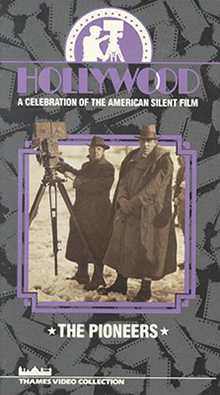
Hollywood is a British television documentary miniseries produced by Thames Television and originally broadcast on ITV in 1980. Written and directed by film historians Kevin Brownlow and David Gill, it explored the establishment and development of the Hollywood studios and their cultural impact during the silent film era of the 1910s and '20s. At the 1981 BAFTA TV Awards, the series won for Best Original Television Music and was nominated for Best Factual Series, Best Film Editing and Best Graphics.

Leatrice Joy was an American actress most prolific during the silent film era.

Julia Faye Maloney, known professionally as Julia Faye, was an American actress of silent and sound films. She was known for her appearances in more than 30 Cecil B. DeMille productions. Her various roles ranged from maids and ingénues to vamps and queens.

Jacqueline Medura Logan was an American actress and silent film star. Logan was a WAMPAS Baby Star of 1922.
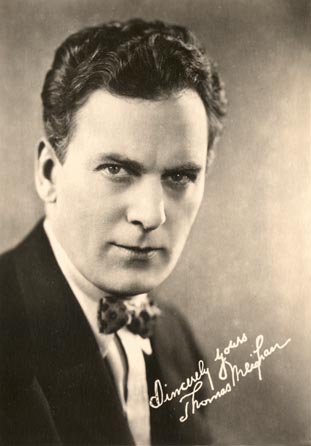
Thomas Meighan was an American actor of silent films and early talkies. He played several leading-man roles opposite popular actresses of the day, including Mary Pickford and Gloria Swanson. At one point he commanded $10,000 per week.

Manslaughter is a 1930 American pre-Code drama film directed by George Abbott, and starring Claudette Colbert and Fredric March. An original print of the film is saved in the UCLA Film and Television Archive. This film is a sound remake of Cecil B. DeMille's 1922 silent classic Manslaughter. Paramount also released a French-language version of this 1930 film as The Indictment, directed by Dimitri Buchowetzki.

Saturday Night is a 1922 American silent romantic comedy film directed by Cecil B. DeMille and starring Leatrice Joy, Conrad Nagel, and Edith Roberts. It was Leatrice Joy's first film with DeMille.

Triumph is a 1924 American silent drama film directed by Cecil B. DeMille and starring Leatrice Joy and Rod La Rocque. It was based on a 1924 novel of the same name by May Edginton. The novel had previously been serialized in 1923 by The Saturday Evening Post.
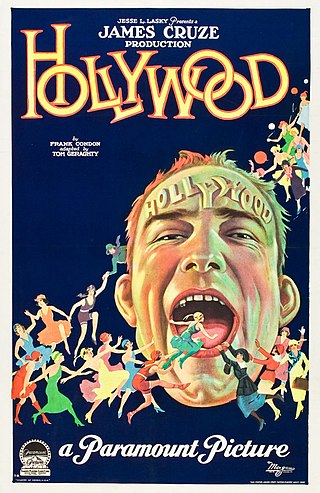
Hollywood is a 1923 American silent comedy film directed by James Cruze, co-written by Frank Condon and Thomas J. Geraghty, and released by Paramount Pictures. The film is a lengthier feature follow-up to Paramount's own short film exposé of itself, A Trip to Paramountown from 1922.

A Trip to Paramountown is a 1922 American short silent documentary film produced by Famous Players–Lasky and released through Paramount Pictures, to celebrate 10 years of Paramount's founding. The film runs about 20 minutes and features many personalities then under contract to Famous Players–Lasky and Paramount.

Minnie is a 1922 American silent comedy film starring Leatrice Joy and co-directed by Marshall Neilan and Frank Urson. Neilan also wrote and produced the film which was released by Associated First National Pictures. It is not known whether the film currently survives, which suggests that it is a lost film.
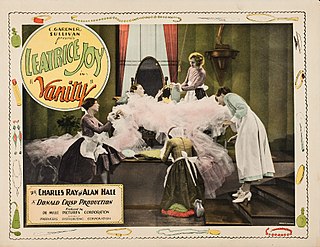
Vanity is a 1927, American silent drama film directed by Donald Crisp and starring Leatrice Joy. The film was written by Douglas Doty, produced by DeMille Pictures Corporation and distributed by Producers Distributing Corporation.
The Clinging Vine is a 1926 American silent comedy film produced by Cecil B. DeMille and Paul Slone and directed by Sloane. It was distributed by DeMille's Producers Distributing Corporation. The film is based on a 1922 Broadway play of the same name by Zelda Sears. The film was a starring vehicle for Leatrice Joy who left Paramount Pictures along with DeMille when he formed his own distributing company PDC.

Eve's Leaves is a 1926 American silent romantic comedy film starring Leatrice Joy and William Boyd. The film was produced and distributed by Cecil B. DeMille and directed by Paul Sloane It is based upon the 1925 play of the same name by Harry Chapman Ford.

The Angel of Broadway is a 1927 American silent drama film produced by Cecil B. DeMille and distributed by Pathé Exchange. It was directed by Lois Weber and starred Leatrice Joy.

The Bachelor Daddy is a lost 1922 American silent comedy film directed by Alfred E. Green and written by Edward Peple and Olga Printzlau. The film stars Thomas Meighan, Leatrice Joy, Maude Wayne, Adele Farrington, J. Farrell MacDonald, Larry Wheat, and Peaches Jackson. The film was released on April 29, 1922, by Paramount Pictures.
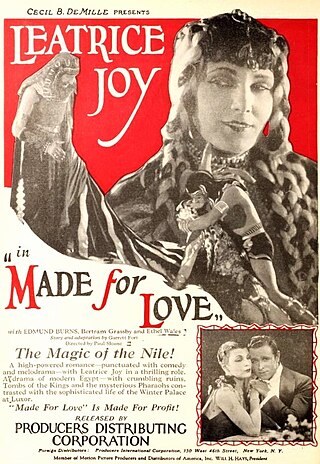
Made for Love is a 1926 American silent drama film directed by Paul Sloane, produced by Cecil B. DeMille, and starring Leatrice Joy.

Emmett Carleton King was an American actor of the stage and screen.
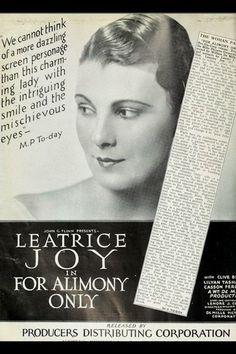
For Alimony Only is a 1926 American silent drama film directed by William C. deMille and starring Leatrice Joy, Clive Brook, and Lilyan Tashman.
























